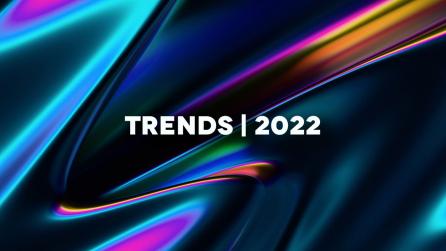Demystifying complex cloud terms for VFX artists
In the VFX world, there’s still a lot of fear, uncertainty, and doubt around cloud technology. Where many other creative industries have long since integrated the cloud into their status quo, the VFX industry remains behind the curve.
Why aren’t more VFX artists and studios tapping into the cost-saving scalability and flexible nature of the cloud, when major tech giants like Netflix, YouTube, and more have found massive success building services that take advantage of it?
Perceived impenetrability is certainly one sizeable stumbling block. Even tech-savvy VFX artists may struggle to unpack the hyper-dense jargon surrounding cloud tech. Beneath the surface of many cloud-centric terms, however, you’ll find concepts that translate surprisingly well into elements that everyday VFX artists are familiar with.
To help demystify some of the myths and complex terminology surrounding the cloud, here’s a breakdown of some important buzzwords and how they relate to VFX.

Virtual Machines
A Virtual Machine (VM) is essentially a slice of a much larger remote server that looks and behaves like a normal Unix or Windows computer. Rather than being individual physical machines sitting somewhere at a remote location, Virtual Machines occupy space on a much larger infrastructure, and they can be configured to your specific needs and allocated in chunks based on user demand. When you’re done using them, they disappear, and their resources are redistributed back to the system.
With cloud providers, you’ll find a range of standard virtual machines configurations to pick from, but there are also several unique options that are particularly useful for VFX workloads.
Custom VMs are virtual machines that can be configured a-la carte in terms of CPU, RAM, and GPU power to suit the specific needs of your project. If you’re doing Nuke compositing, for example, you may not need as much VM processing as you would for a Katana job that requires significantly more computing power and RAM for an interactive lighting session. Custom VMs let you scale up or down as needed to fit a particular job at any given moment, and they last as long as you need them.
Preemptible VMs feature the same customization options as Custom VMs, but these temporary VMs are carved out of leftover in-between server space that isn’t currently being used by other customers of the cloud provider. They’re a fraction of the cost of Custom VMs, but it’s a trade-off because they can also be taken away if the system space and resources they’re using are needed elsewhere. This makes them an affordable option that’s well-suited for VFX workflows like rendering jobs that can be restarted without issue.

Why VMs Matter to VFX
The advantage of using Virtual Machines in VFX is you’re not limited to the physical hardware you have on-site, and you can rapidly scale up or down as needed to tackle different types of workloads easily, explains Todd Prives, = product manager at Google.
“The flexibility of being able to provision the types of machines you need at the time, and only pay for them while you consume them, is another advantage to Google Cloud Platform (GCP),” he says. “It gives access to these tools to artists all over the world now in a remote environment, but at the same time backs those sessions with the appropropriate configuration based on what you as the artist actually needs for your work. So you’re not overpaying for machines when you’re not using them for a resource.”
Encryption and Security
When it comes to security in the cloud, there are two main buzzwords surrounding encryption. While they’re simple to understand, they’re both essential to cloud security as it relates to VFX.
Encryption at Rest means your data is encrypted where it’s being stored.
Encryption in Transit means your data is encrypted while it’s moving over the wire from one place to another.
The conversation about security in VFX typically revolves around securing a facility, using card readers, and limiting physical access to sensitive data. That’s useful, but it doesn’t necessarily stop someone from walking off-site with sensitive project data.
Encryption is another vital layer of the equation, and security in the cloud is more about actually locking down the data itself and having very stringent protocols and access controls around the data to prevent unwanted eyes from viewing the files even if they’re able to gain access.

Containers and Storage
Going another level of abstraction deeper than Virtual Machines, Containers are essentially their own operating system and application contained in a completely isolated environment. You can run many containers on one Virtual Machine and they all share the same core system resources—all while maintaining different permission models to let each user only have access to the files they’re allowed to see within their own container.
Speed of data access is another important factor in the cloud, particularly with VFX workflows. The standard POSIX file system, which is the term for how everyday computer system files and directories are organized, is great for organization but sluggish and inefficient for searching and access files. YouTube and Netflix, for example, need to be able to retrieve massive files almost instantaneously, and traditional POSIX file systems were not designed for this. For this reason, cloud-based systems utilize a different structure.
Object Store (or Bucket) is a massive industrial-grade storage system that operates somewhere between a database and a normal file system. Because the cloud holds a tremendous amount of data, having a faster, easier system for archiving and accessing it is vital. Object Store is very cheap and incredibly fast.


